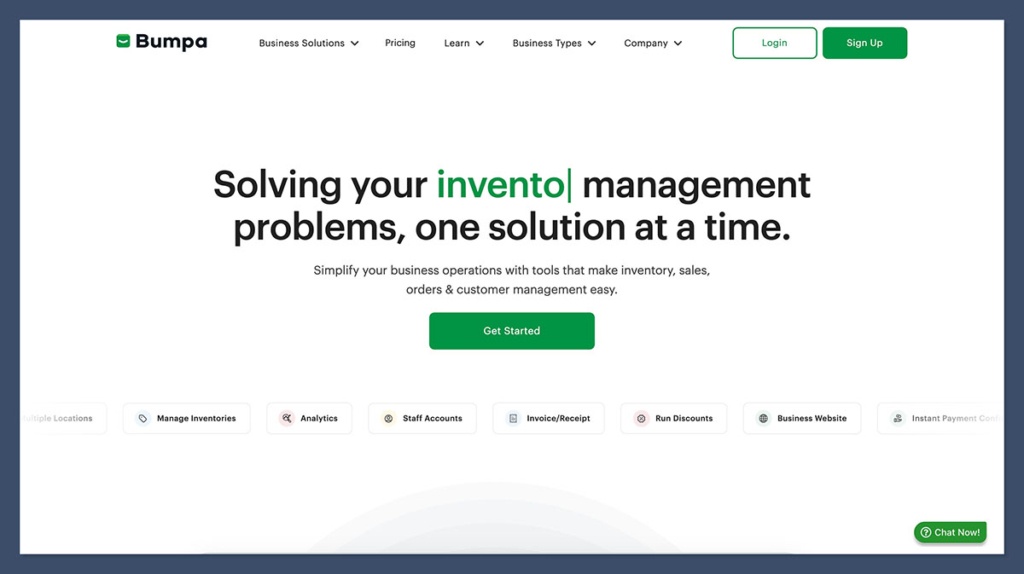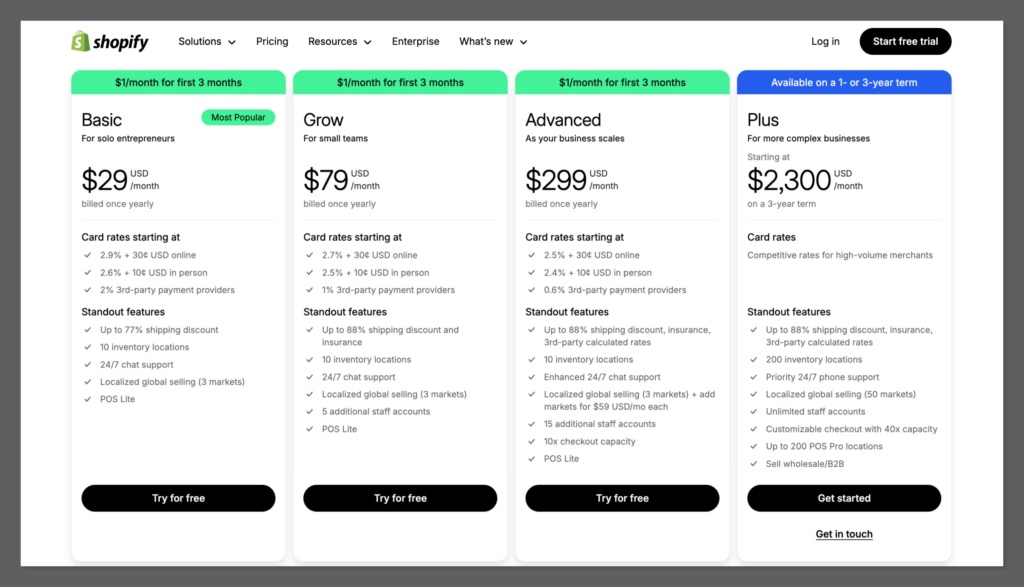
When comparing ecommerce platforms in 2025, Shopify and Bumpa represent two very different but equally interesting options for entrepreneurs.
Shopify is a global heavyweight with millions of stores, endless integrations, and an unmatched ecosystem of developers and apps.
Bumpa, by contrast, is a rising star in Africa — designed specifically for business owners in Nigeria who need an easy, affordable, and locally relevant way to sell online.
In this detailed review, we’ll examine both platforms across pricing, sales features, design flexibility, payments, delivery, ease of use, and customer support — helping you decide which builder is best suited for your business needs.
A Quick Comparison of Shopify vs Bumpa
Here’s a side-by-side snapshot of how the two platforms compare:
| Feature | Shopify | Bumpa |
|---|---|---|
| Overall Rating | 4.8/5 | 4.1/5 |
| Starting Price | $29/month | ₦5,000/month (~$3.30) |
| Free Trial | 3-day trial | Yes, limited features |
| Best For | Global businesses | Nigerian small businesses |
| Transaction Fees | Yes (unless using Shopify Payments) | No extra fees |
| Mobile App | Yes | Yes (built for mobile-first sellers) |
| Payment Options | 100+ gateways | Paystack, Flutterwave |
| Built-In Delivery Options | Requires apps | Integrated with Fez, Shipbubble |
| Inventory Management | Advanced (with add-ons) | Built-in, simple to use |
| Templates | 100+ (many paid) | Localized templates |
| App Market | 8,000+ apps | Limited, most features built-in |
| Customer Support | 24/7 global support | Localized support (chat, WhatsApp) |
While both tools enable businesses to create and manage online stores, their target audiences couldn’t be more different.
Shopify is designed for scale — a platform for established entrepreneurs aiming to grow internationally. It’s feature-rich, robust, and powerful, but also more complex and expensive.

Bumpa, on the other hand, focuses on small and mid-sized businesses in Nigeria.
It’s optimized for speed, affordability, and regional relevance — offering features that directly address local pain points like logistics, currency management, and WhatsApp-driven sales.
In essence: Shopify is built for global commerce, while Bumpa is built for accessible commerce. The decision comes down to where you operate, how large your ambitions are, and what level of complexity you’re comfortable managing.
1. Best for Pricing: Bumpa
The Winner: Bumpa — much more affordable for new businesses
Shopify and Bumpa follow completely different pricing philosophies. Shopify’s pricing is structured for scalability and flexibility, while Bumpa’s model is focused on simplicity and accessibility.
This makes Bumpa particularly appealing to entrepreneurs who are just starting out or managing a small business with limited capital.

How Much Do Shopify and Bumpa Cost?
| Plan | Shopify | Key Features | Bumpa | Key Features |
|---|---|---|---|---|
| Basic | $29/month | Sell unlimited products, access to apps, basic analytics | Starter – ₦5,000/month (~$3.30) | Custom domain, order tracking, product uploads |
| Grow/Standard | $79/month | Abandoned cart recovery, better shipping rates | Pro – ₦10,000/month (~$6.60) | Discounts, cart recovery, customer CRM |
| Advanced | $299/month | Advanced reports, 15 staff accounts | Scale/Premium | Custom pricing |
While Shopify’s lowest plan starts at $29 per month, this cost quickly rises once you factor in premium themes, app subscriptions, and transaction fees.

A typical Shopify store might end up costing $50–$100 per month to run. In contrast, Bumpa’s Starter or Pro plans cover nearly everything most small businesses need — and cost less than a single lunch in New York City.
Bumpa’s pricing structure is transparent and easy to understand. You don’t need to pay separately for hosting, plugins, or transaction fees.
Shopify’s model is more modular — powerful but more expensive in practice. This difference makes Bumpa a lifesaver for early-stage entrepreneurs, while Shopify remains better suited to businesses with higher revenue and long-term growth plans.
Another consideration is currency flexibility. Shopify bills in USD, while Bumpa charges in Naira, avoiding the volatility of exchange rates and card conversion fees.
For local merchants, that simplicity can mean more predictable costs and easier financial planning.
2. Best for Selling Online: Shopify
The Winner: Shopify — unbeatable sales features and app integrations
Shopify has spent over a decade refining its sales toolkit, and it shows. Its ability to handle multiple sales channels, integrate with hundreds of apps, and automate marketing functions is second to none.
Bumpa, however, deserves credit for creating something remarkably effective for smaller sellers — simple automation, localized checkout, and WhatsApp-friendly workflows.
Shopify Sales Tools
- Multichannel selling across Amazon, Instagram, Facebook, and TikTok
- Custom sales funnels using third-party integrations
- Advanced POS (Point of Sale) system for physical stores
- Access to 8,000+ apps for upselling, bundling, subscriptions, and analytics
Bumpa Sales Tools
- WhatsApp automation to cut down DMs and manual responses
- Time-triggered discounts and promo codes
- Localized checkout with automatic currency handling (NGN/USD)
- Abandoned cart recovery built-in without extra fees
Shopify’s ecosystem empowers large-scale sellers to experiment and optimize.
You can build subscription models, automate follow-ups, or sync your products with marketplaces around the world. Its sales capabilities are nearly endless but require some management and technical knowledge.
Bumpa’s selling experience, however, feels purpose-built for African entrepreneurs who need efficiency, not complexity.
Most features are already integrated, so there’s no need for third-party tools. Sellers can manage products, track orders, and collect payments in one dashboard — even from a smartphone.
If Shopify is a precision instrument for scaling internationally, Bumpa is a Swiss Army knife for running your day-to-day business locally.
3. Best for Design and Templates: Shopify
The Winner: Shopify — more variety and flexibility in design
A well-designed storefront can make the difference between a visitor and a paying customer.
Shopify offers world-class design tools, while Bumpa focuses on simplicity and ease of setup for entrepreneurs who don’t have access to designers.
Shopify Templates
- Over 100 professionally designed themes
- 24 free and 80+ premium templates ($100–$500 one-time cost)
- Built-in support for large catalogs, product filters, and lookbooks
- Advanced customization through HTML, Liquid, and CSS
Bumpa Templates
- Clean, modern templates designed for retail and local markets
- Focused on fashion, beauty, and lifestyle businesses
- Mobile-first design for local smartphone users
- Customization via colors, logos, and layout tweaks (no coding required)
| Platform | Free Themes | Mobile Responsive | Customizable |
|---|---|---|---|
| Shopify | 24 | ✅ | Advanced |
| Bumpa | ~10 | ✅ | Basic |
Shopify’s templates are elegant and diverse, making it easy for global brands to create unique, professional storefronts.
It also allows custom coding for businesses that need complete creative freedom. However, that freedom comes with a learning curve and additional costs for developers or premium themes.
Bumpa’s templates are intentionally minimalist — perfect for sellers who value speed and functionality over artistic control.
Each theme is built for local shoppers who often browse on mobile devices and prefer straightforward navigation. It’s not as flexible, but for a new business owner, it’s refreshingly simple and efficient.
If Shopify’s design tools are a playground for professionals, Bumpa’s are a friendly starter kit for local entrepreneurs.
4. Best for Payment Processing: Bumpa
The Winner: Bumpa — optimized for Nigerian payments
In many ways, payment processing is where Shopify’s global nature becomes a limitation for local sellers. Shopify’s options are vast, but not all are accessible or practical in Nigeria.
Bumpa’s integrations, meanwhile, are built around how local customers actually pay.
Shopify Payments
- Over 100 supported gateways, including PayPal, Stripe, and Apple Pay
- Shopify Payments lowers fees but isn’t available in Nigeria
- Transaction fees between 2.9% + 30¢ (Basic) and 2.5% + 30¢ (Advanced)
- Currency conversion fees apply if selling in non-USD markets
Bumpa Payments
- Paystack and Flutterwave fully integrated
- Accepts both Naira and USD with automatic conversion
- No third-party apps or plugins required
- Checkout optimized for African payment behavior (cards, bank transfers, mobile money)
For international merchants, Shopify’s payment flexibility is unmatched. But for local sellers, it introduces friction — setup complexity, limited gateways, and additional transaction costs.
Bumpa’s integration with Paystack and Flutterwave makes transactions nearly instantaneous. Payments are secure, mobile-friendly, and widely familiar to Nigerian customers.
Plus, it eliminates the need for extra payment app installations, helping merchants start accepting orders immediately after launching their store.
5. Best for Shipping and Delivery: Bumpa
The Winner: Bumpa — direct integrations with local couriers
Shipping and delivery are often underestimated challenges for small businesses. While Shopify dominates internationally, Bumpa has solved the local logistics problem more directly.
Shopify Shipping
- Works with DHL, UPS, FedEx, and USPS
- Access to real-time rates and label printing (in supported countries)
- Requires third-party apps or carriers for African markets
- Best suited for global fulfillment or export-based businesses
Bumpa Shipping
- Integrated with Fez Delivery and Shipbubble
- Ability to set dynamic shipping rates based on location
- Generate waybills and dispatch details from dashboard
- Built for Nigerian address formats and delivery zones
| Feature | Shopify | Bumpa |
|---|---|---|
| Built-in logistics | ❌ | ✅ |
| Local delivery integration | Limited | Full (Fez, Shipbubble) |
| Waybill generation | Via apps | Built-in |
| Custom delivery rates | ✅ | ✅ |
Shopify’s logistics network shines for international commerce. But the moment you focus on domestic deliveries within Nigeria, it becomes less efficient.
You’ll need to configure shipping zones manually and depend on global carriers that don’t always offer local coverage.
Bumpa bridges that gap. Its partnerships with domestic courier services give sellers access to affordable, reliable delivery options directly within their website dashboard.
Sellers can even let customers choose preferred delivery partners at checkout, reducing manual coordination.
For regional commerce, Bumpa’s logistics integrations are a genuine game-changer.
6. Best for Ease of Use: Bumpa
The Winner: Bumpa — faster onboarding and intuitive setup
For new business owners, ease of use is everything. Shopify is incredibly capable but can feel overwhelming for beginners. Bumpa was intentionally built to reduce that cognitive load.
Shopify Setup Experience
- 13-step onboarding process
- Requires manual configuration of tax, checkout, and app integrations
- More suited to users with prior ecommerce experience
Bumpa Setup Experience
- Onboarding completed in minutes
- Guided walkthrough and pre-filled templates
- Mobile app for managing everything — even while offline
What makes Bumpa especially appealing is how natural it feels for everyday business owners.
You don’t need tutorials to start; most of the workflow mirrors how local merchants already operate — adding products, setting prices, managing deliveries, and chatting with customers.
Shopify, while still user-friendly, is feature-dense. Its setup process can take longer, and its dashboard includes a wide range of options that small sellers may never need.
If Shopify is a professional-grade toolkit, Bumpa is the plug-and-play solution designed to get you selling the same day.
7. Best for Customer Support: Bumpa (for Local Businesses)
The Winner: Bumpa — better local support and communication
Both platforms offer strong customer service, but their focus differs.
Shopify has the infrastructure to support millions of merchants worldwide, whereas Bumpa prioritizes direct, human support for regional users.
Shopify Support
- 24/7 live chat and help center
- Massive knowledge base, video guides, and community forums
- Paid access to Shopify Experts for one-on-one support
Bumpa Support
- Real-time WhatsApp chat with local agents
- In-app assistance for technical issues and onboarding
- Personalized help for delivery setup, domain linking, and payment integration
Shopify’s global support is reliable and professional, but its agents aren’t always familiar with regional challenges — like local payment gateway restrictions or Nigerian postal codes.
Bumpa’s team, on the other hand, operates in the same environment as its customers, giving it an edge in empathy and practicality.
Bumpa also hosts a growing community of small business owners who share advice, feedback, and tips.
For many users, this peer network becomes an extension of customer support — something that’s harder to find in Shopify’s massive ecosystem.
Shopify vs Bumpa: Final Verdict
Choosing between Shopify and Bumpa ultimately comes down to the size of your business, your market, your technical comfort level, and your budget.
Both platforms are excellent in their own right — but they solve very different problems for very different users.
Below is a summary of how they performed across the core criteria:
| Category | Winner |
|---|---|
| Pricing | Bumpa |
| Sales Features | Shopify |
| Templates | Shopify |
| Payment Processing | Bumpa |
| Delivery/Shipping | Bumpa |
| Ease of Use | Bumpa |
| Support | Bumpa (for local sellers) |
Shopify is Best For:
- Businesses looking to scale internationally
- Stores with complex product catalogs
- Brands needing deep customization and app integrations
- Sellers with higher budgets and tech support
Bumpa is Best For:
- Local businesses in Nigeria or Africa
- Solopreneurs and microbusinesses
- Those transitioning from WhatsApp selling
- Business owners looking for low-cost, all-in-one tools






